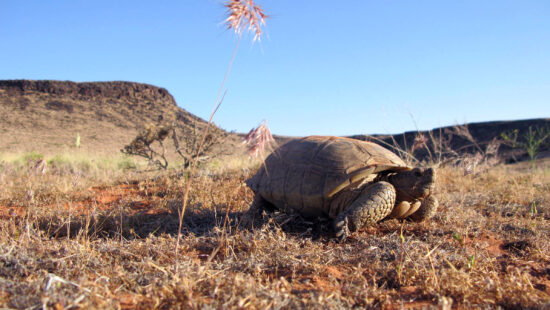Wildlife
DWR explains how to handle wildlife sightings this winter

Deer in Springville after snowfall forced them out of the mountains. Photo: courtesy of Utah Division of Wildlife Resources.
SALT LAKE CITY — As Utah’s population grows and development expands into foothills and canyons, wildlife encounters have become more common. The Utah Division of Wildlife Resources is reminding residents that not every sighting requires a report.
Encounters typically increase in summer as more people recreate in mountain habitats. In winter, deer, moose, turkeys and other species move to lower elevations in search of food, sometimes followed by cougars that prey on deer.
According to the DWR, more sightings are being reported because of increased building in wildlife habitat and the widespread use of home security cameras that capture footage that previously went unnoticed.
If wildlife appears in a neighborhood or yard, officials say people should keep their distance.
“Getting too close to a wild animal can cause the animal to feel threatened,” DWR Big Game Coordinator Dax Mangus said. “If it feels threatened, it will sometimes act aggressively to protect itself, which can be unsafe for you or your pets. However, these encounters can also be harmful for the animal. Because it’s harder for some wildlife to find food in the winter, they need to conserve their energy in order to survive. While a one-off encounter may not be fatal, repeatedly disturbing or chasing species — such as moose and deer — can cause them to use up some of the essential fat reserves and energy they need to survive the winter.”
The DWR also urges people not to feed wildlife. While feeding is illegal only in cities with local ordinances, the agency strongly discourages it due to safety concerns, the spread of diseases such as chronic wasting disease and avian influenza, and the risk of feeding animals foods outside their natural diets.
Anyone injured by wildlife should seek medical attention and report the incident to the DWR.
The agency outlined the types of sightings that should be reported:
Cougars:
Cougars occur statewide, particularly in foothills and canyons. Residents should report a sighting if the animal has killed something in a neighborhood or yard, is acting aggressively, or appears multiple times on security cameras. One-time sightings from a distance generally do not require a report.
Bears:
Black bears should be reported if they are aggressive or accessing trash, fruit trees or causing other damage in foothill and canyon areas. Bears in city limits or heavily populated areas should always be reported. Bears typically hibernate from November through March.
Moose:
Moose found in cities or crowded areas should be reported so the DWR can relocate them. Moose can remain in urban areas for extended periods and may injure people or damage property. Officials warn against approaching or attempting to herd moose, which can be aggressive, especially around dogs.
Deer:
Report deer only if they are acting aggressively, which is more common during the November breeding season. Residents dealing with landscaping damage can find prevention tips on the DWR website. Dead deer in neighborhoods or parks should be reported to a regional DWR office. Roadkill can also be reported through the Utah Roadkill Reporter app.
Bobcats:
Bobcats are less commonly seen but may appear in neighborhoods. They should be reported only if they cause property damage or attack a person, pet or livestock.
Turkeys:
Turkeys causing property damage should be reported for possible relocation. Turkeys can become aggressive, and the DWR discourages feeding them or placing seed on the ground, which can concentrate birds, contribute to disease spread and disrupt natural movement patterns.
Birds of prey:
Hawks, eagles and other raptors sometimes feed on roadkill and may remain grounded temporarily after gorging. They should be reported only if they remain in the same spot for more than 12 hours, have an obvious injury, or are standing in a roadway and at risk of being hit.
More wildlife safety information is available on the Wild Aware Utah website.
Sharing your yard: mountain lions




















